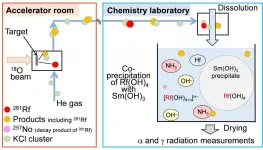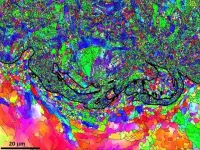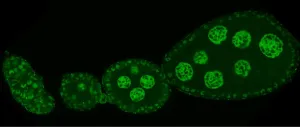Cancer research: Targeted elimination of leukemic stem cells
New signaling pathway LIGHT/LTbR proves to be specific and efficient
2021-02-16
(Press-News.org) Leukemia is caused by leukemic stem cells which are resistant to most known therapies. Relapses are also due to this resistance. Leukemic stem cells arise from normal blood-forming (hematopoietic) stem cells. Because they are closely related, leukemic and hematopoietic stem cells share many of the same signaling pathways. If the proliferation of leukemic stem cells is to be stopped, it is crucial to find signaling pathways that are active only in the leukemic stem cell, but not the normal one. With this goal in mind, Prof. Adrian Ochsenbein and his team are conducting research at the Department of Medical Oncology at Inselspital, Bern University Hospital. The latest discovery, the so-called LIGHT/LTbR pathway, is presented in Sabine Höpner's article published today in Nature Communications.
A new approach to controlling leukemic stem cells
In normal blood formation, the LIGHT/LTbR signaling pathway plays no role in hematopoietic stem cells. It is important in maintaining stem cell function only in situations of increased demand, such as after chemotherapy. In contrast, leukemic stem cells always rely on this signaling pathway. The LIGHT/LTbR signaling pathway leads to increased symmetric cell division and thus proliferation of leukemic stem cells. If the pathway is blocked with monoclonal antibodies, for example, the stem cells lose their stem cell function and die. Furthermore, the LIGHT binding site is significantly more abundant in leukemic stem cells than in normal stem cells. In laboratory experiments, animals with leukemia survived significantly longer when the newly discovered signaling pathway had been blocked.
The latest contribution is a beacon of hope for future leukemia treatment
The results published show that multiple receptor/ligand pairs are involved in the maintenance of leukemic stem cells. The researchers believe that the new approach (blocking LIGHT) may lead to an improved therapy of various types of leukemia in the future.
Therapy with medications that aim to block various immune receptors and ligands has revolutionized the treatment of cancer diseases. However, important drugs used to treat solid tumors are not effective in treating leukemia. Therefore, the CD70/CD27 and LIGHT/LTbR signaling pathways that we have defined represent an important advance in improving immunotherapy in myeloid leukemia. Research groups at Stanford have developed antibodies against CD47 that activate another immune signaling pathway (phagocytosis). These new drugs are already in phase II development for the treatment of acute myeloid leukemia.
INFORMATION:
[Attachments] See images for this press release:

ELSE PRESS RELEASES FROM THIS DATE:
2021-02-16
Our universe is dominated by a mysterious matter known as dark matter. Its name comes from the fact that dark matter does not absorb, reflect or emit electromagnetic radiation, making it difficult to detect.
Now, a team of researchers has investigated the strength of dark matter scattered across the smallest galaxies in the universe using stellar kinematics.
"We discovered that the strength of dark matter is quite small, suggesting that dark matter does not easily scatter together," said professor Kohei Hayashi, lead author of the study.
Much is unknown about dark matter, but theoretical and experimental research, from particle physics to astronomy, are elucidating more ...
2021-02-16
Researchers from the Oil and Gas Research Institute of the Russian Academy of Sciences and their Skoltech colleagues have surveyed the newest known 30-meter deep gas blowout crater on the Yamal Peninsula, which formed in the summer of 2020. The paper was published in the journal Geosciences.
Giant craters in the Russian Arctic, thought to be the remnants of powerful gas blowouts, first attracted worldwide attention in 2014, when the 20 to 40-meter wide Yamal Crater was found quite close to the Bovanenkovo gas field. The prevailing hypothesis is that these craters are formed after gas is accumulated in cavities in the upper layers of permafrost, and ...
2021-02-16
In recent time, HBO's highly acclaimed and award-winning miniseries Chernobyl highlighted the horror of nuclear power plant accident, which happened in Ukraine in 1986. It is not a fictional series just on TV. As we had seen such a catastrophic nuclear power plant accident in 2011 again caused by natural disaster, Tsunami, in Japan. Both historical nuclear power plant accidents released tons of radioactive cesium to the environment. Consequently, the radioactive cesium found their way to the surrounding land, river, into the plants and animal feed, and eventually to our food cycle and ecosystem. The more detrimental part is their half-life, ...
2021-02-16
Both Earth and Mars currently have oxidising atmospheres, which is why iron-rich materials in daily life develop rust (a common name for iron oxide) during the oxidation reaction of iron and oxygen. The Earth has had an oxidising atmosphere for approximately two and a half billion years, but before that, the atmosphere of this planet was reducing - there was no rust.
The transition from a reduced planet to an oxidised planet is referred to as the Great Oxidation Event or GOE. This transition was a central part of our planet's evolution, and fundamentally linked to the evolution of life here - specifically ...
2021-02-16
Osaka, Japan - All chemistry students are taught about the periodic table, an organization of the elements that helps you identify and predict trends in their properties. For example, science fiction writers sometimes describe life based on the element silicon because it is in the same column in the periodic table as carbon.
However, there are deviations from expected periodic trends. For example, lead and tin are in the same column in the periodic table and thus should have similar properties. However, whilst lead-acid batteries are common in cars, tin-acid batteries don't work. Nowadays ...
2021-02-16
ST. LOUIS, MO, February 16, 2021 - Delivering the benefits of agricultural biotechnology to smallholder farmers requires that resources be directed toward staple food crops. To achieve effect at scale, beneficial traits must be integrated into multiple, elite farmer-preferred varieties with relevance across geographical regions. For the first time, an international team of scientists, led by Narayanan Narayanan, Ph.D., senior research scientist, and Nigel Taylor, Ph.D., associate member and Dorothy J. King Distinguished Investigator at the Donald Danforth Plant Science Center, and their collaborators in Nigeria, led ...
2021-02-16
For the first time, a research team led by Lund University in Sweden has mapped out exactly what happens when spruce bark beetles use their sense of smell to find trees and partners to reproduce with. The hope is that the results will lead to better pest control and protection of the forest in the future.
The Eurasian spruce bark beetle uses its sense of smell to locate trees and partners. The odours are captured via odorant receptors (proteins) in their antennae. Researchers have long understood the connection, but so far they have not known exactly which receptors bind to what pheromones. ...
2021-02-16
Scientists have discovered an essential protein in cholera-causing bacteria that allows them to adapt to changes in temperature, according to a study published today in eLife.
The protein, BipA, is conserved across bacterial species, which suggests it could hold the key to how other types of bacteria change their biology and growth to survive at suboptimal temperatures.
Vibrio cholerae (V. cholerae) is the bacteria responsible for the severe diarrhoeal disease cholera. As with other species, V. cholerae forms biofilms - communities of bacteria enclosed in a structure made up of sugars and proteins - to protect against predators and stress conditions. V. cholerae forms these biofilms both in their aquatic environment and in the human intestine. There is evidence to suggest that biofilm ...
2021-02-16
An international team of researchers has solved a puzzling phenomenon whereby strangely beautiful, vortex-like structures appear between materials deposited onto engineering components used in multiple settings - from space shuttles to household items and everyday transport vehicles.
The discovery may ultimately improve the efficiency of the "Cold Spray" (CS) deposition process from which these structures are formed - a not-insignificant consideration from a financial perspective, or from a functional one given that some of the materials created by CS are pushed to the limit in outer space.
The discovery is featured on the front cover of international journal, Materials & Design.
Cold Spray (CS) and deposition efficiency (DE)
CS enables the formation of coatings, ...
2021-02-16
Why do genes need to be silenced? The "genes" in question are in fact transposons, selfish genetic elements that seek to self-multiply at the host's expense and that need to be controlled. Julius Brennecke's group at IMBA focuses on lifting the mysteries of a specific type of transposon silencing, namely the piRNA pathway in animal gonads. Understanding this ancient silencing system promises to reveal general mechanistic principles of gene expression and chromatin biology.
Gene silencing: either before they "speak", or right as they attempt to
Heterochromatin, a tightly packed form of DNA, plays an essential role in transposon ...
LAST 30 PRESS RELEASES:
[Press-News.org] Cancer research: Targeted elimination of leukemic stem cells
New signaling pathway LIGHT/LTbR proves to be specific and efficient








